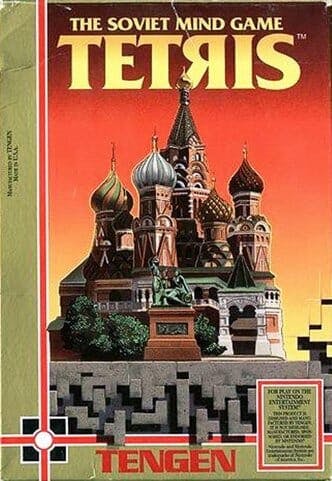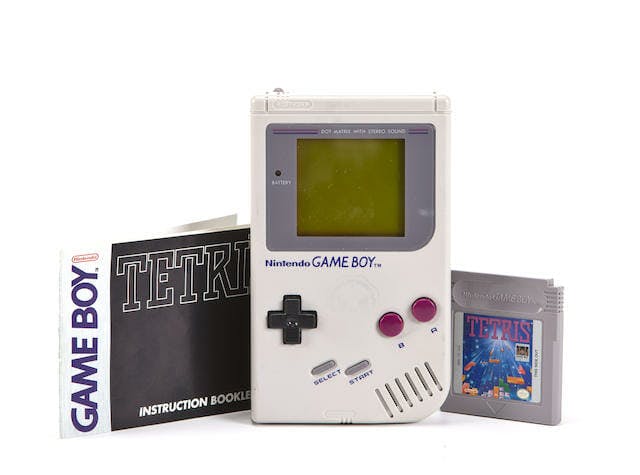There’s a good chance you’ve played Tetris at some point, and even if haven’t, you’ve definitely had the theme music stuck in your head.
Beloved by children of all ages, the simple puzzle game takes seconds to learn, but you’ll burn countless hours getting good at it. Fortunately, Tetris has some surprising benefits, which you’ll learn when we collection of interesting Tetris facts.
25 fascinating Tetris facts
1) Tetris was developed in 1984 by a Russian
Tetris creator Alexey Pajitnov created Tetris while working a computer programmer at the Soviet Academy of Sciences’ Computer Center in Moscow in 1984. Tasked with programming computer games that would test the capabilities of the U.S.S.R.’s computer equipment, he spent his spare time dreaming up puzzle games.
2) There’s a name for those weird Tetris pieces
Pajitnov was influenced by pentominos puzzles when designing Tetris. Pentominos—shapes created by combining five blocks—have been used in math games since 1907. There are 12 shapes of pentominos, but only seven of them are used in Tetris. In a standard pentominos puzzle, players must fit the shapes into a rectangular box without any overlap or gaps. Sound familiar?
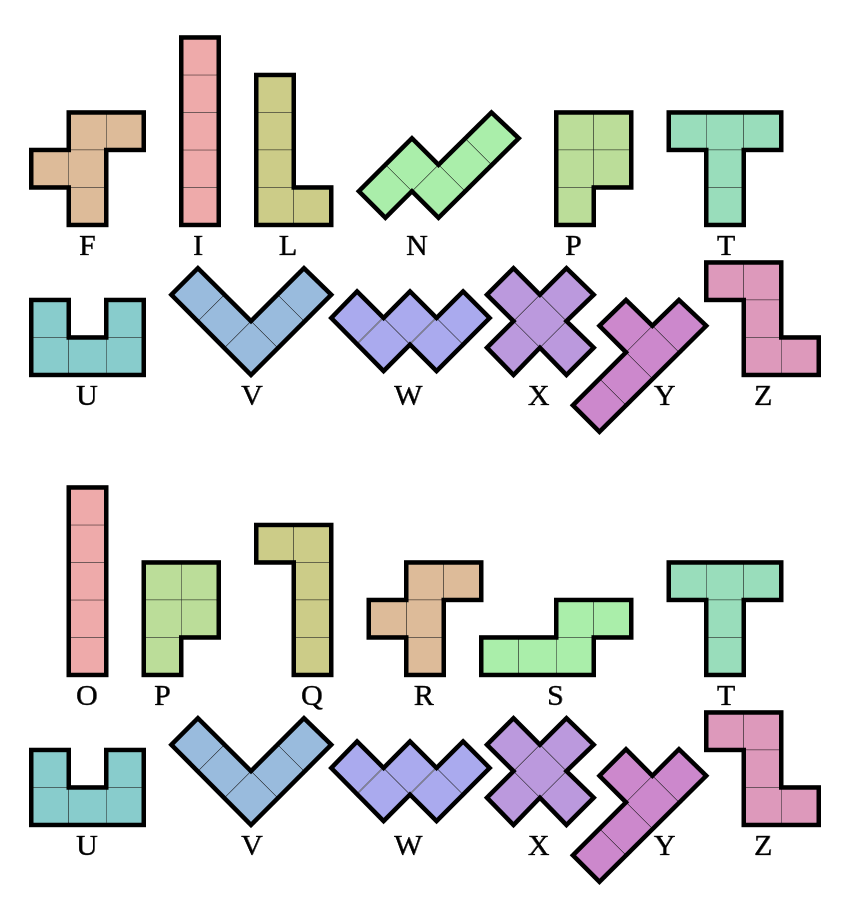
Tetris uses what’s known as tetrominoes, a special case of pentominos with four elements.
3) The playing field in Tetris is called the Matrix
The Matrix is made up of a 10-by-20 grid (and has nothing to do with Keanu Reeves).
4) “Tetris” is a combination of Greek and the creator’s favorite sport
Tetris’ name is a portmanteau, where the sounds and meanings of two words are combined to make a new word. Tetris comes from the Greek word tetra, meaning four, and tennis, creator Pajitnov’s favorite sport. Each Tetris piece is made up of exactly four blocks, easily explaining Pajitnov’s rational for the first part of Tetris‘s name. The game’s similarities to tennis are not as immediately apparent, beyond its addictive qualities and constantly changing defensive moves.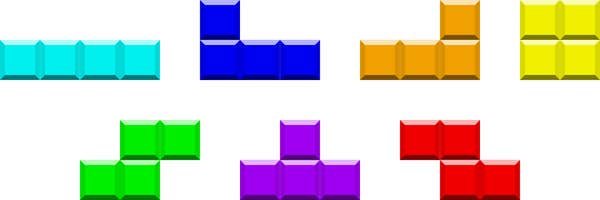
5) Tetris was designed to make computers seem less intimidating
Pajitnov wasn’t just setting out to make a game when he developed Tetris; he was trying to show people computers could be easy to learn. In a 2014 interview with CNBC, Pajitnov said, “Tetris was lucky to be a messenger for early customers of the computer. It’s not just a sophisticated thing to deal with numbers and spreadsheets, but also a fun toy to play a simple and engaging game. It was important for people to feel better about the computer. That was a very important role for Tetris at that time.”
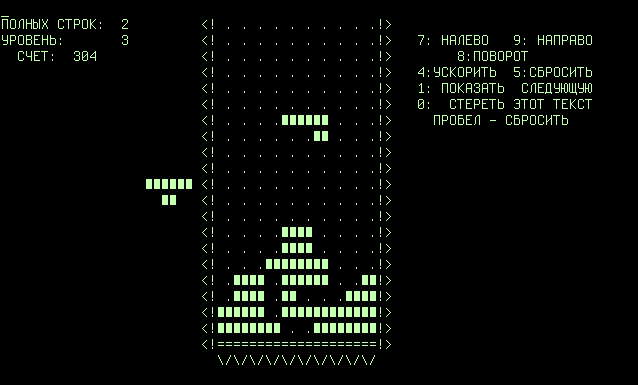
6) The game originally spread through piracy
When Tetris was originally developed, Pajitnov was working for the Russian government building computer programs. He originally wanted to publish the game but didn’t know how and worried he’d be punished by the government for doing so. A copy was smuggled to Hungary, however, and unauthorized versions begin popping up. Pajitnov granted his rights to the Soviet Union for 10 years so it could license official versions. Without piracy, Tetris might have stayed an oddball anomaly on a Soviet computer.
7) Even the original NES version of Tetris was technically a pirated port
The original NES version of Tetris was released by a company called Tengen, owned by Atari. There’s just one problem: Atari didn’t have the rights to produce a home version of the game. Rather, its license was for arcade versions of Tetris. It turns out Atari had asked Pajitnov for permission to release a home console version of the game instead of the Russian government.
While Atari was trying to sort out the details, the U.S.S.R. granted licensing rights for Tetris to Nintendo. Tengen and Atari sued Nintendo claiming it had the rights to distribute its version of Tetris. Tengen lost the case in June 1989, with a U.S. district court judge issuing an injunction stopping further sales of their Tetris. The title had been on shelves for a month when the order came down, during which time about 100,000 copies were sold.
8) The Tengen version of Tetris was actually better
The recall of the Tengen release was a minor tragedy for video game fans because it was superior to Nintendo’s version in many ways. In addition to the standard game, Tengen’s release featured a competitive mode the NES version lacked and multiple difficulty levels.
9) Tetris‘s creator didn’t get royalties until 1996
Despite Tetris‘s wild popularity, including being bundled with the Game Boy in the late ’80s, Pajitnov never saw a dime from sales of Tetris until 1996. According to an interview with the Guardian, Pajitnov gave his rights to the software to the Russian government for 10 years, making it one of the first pieces of software exported by the Soviet Union. In 1996, he founded the Tetris Company, which now owns the rights to Tetris worldwide, licensing the game out to third parties.
10) Nintendo almost rejected Tetris for Game Boy
When Henk Rogers of Bullet Proof Software first pitched Tetris for the Game Boy to Nintendo, Nintendo didn’t think it would work because it wouldn’t appeal to little boys. Rogers responded, “If you want little boys to play Game Boy, pack in Mario—but if you want everyone to play Game Boy, pack in Tetris.” Nintendo shipped more than 35 million copies of Tetris with the original Game Boy.
READ MORE:
- 15 facts you didn’t know about Mario Kart
- 10 NES Classic Edition facts you probably don’t know
- The 10 most expensive Lego sets
11) Pajitnov made three weird spin-offs
After immigrating to the United States, Pajitnov developed three unofficial spin-offs of the game. Each took the original idea in strange new directions. The first was Welltris in 1989, a 3D riff on Tetris and the most like the original game. Players moved pieces along the walls of a 3D well, arranging them to line up at the bottom. It’s an odd concept, masterfully designed and ahead of its time when it comes to avant-garde puzzle games.
Next up was Faces, combining the horror of David Cronenberg with the face matching goodness of Guess Who. In the game, pieces of people’s faces float down from above. The player does their best to put everyone’s faces back together before humanity becomes a mismatched mess of monstrosities. Faces is one of the creepiest games ever made.
Finally, Pajitnov released Hatris, a hat-stacking game based on his original concept. Players attempt to stack five of the same hat on the same head. This shockingly simply concept is horrifically addictive, though you may not be able to tell from the video below. If you can find an emulator that plays it, Hatris is a wonderful throwback to ’90s puzzle games.
https://youtu.be/zdfnSzbEMJk
12) Pajitnov developed the puzzle mode for Nintendo’s Yoshi’s Cookie on SNES
Tetris helped kick off a wave of intense puzzle games, leading to a field flooded with imitators. After developing Welltris and Hatris, Pajitnov went to work for Nintendo, the company that helped break his game to a mass market in the first place. Nintendo hired him to develop a special puzzle mode for the Super Nintendo port of its Yoshi’s Cookie game. Puzzle Mode required players to clear fields of cookies within a limited number of moves. You can see his contributions below.
13) Tetris was the first video game played in outer space
In 1993, Russian cosmonaut Aleksandr A. Serebrov spent 196 days on the Mir space station with a very special distraction: a gray Game Boy loaded with Tetris. During that time the game orbited the Earth 3,000 times and became the first video game played in space. The Game Boy was sold in a Bonhams auction for $1,220 during the Space History Sale in 2011.
14) A game with only “z” and “s” pieces will always end before 70,000 tetrominoes are played
Tetris is a favorite game among mathematicians, inspiring academic papers from fans. One particularly fascinating examination comes from Heidi Burgiel, a student at the University of Illinois at Urbana-Champaign.
In her paper “How to Lose at Tetris,” Burgiel sought out to examine what qualifications are necessary to make an unbeatable Tetris game. Her study showed, mathematically, that a game featuring only alternating “z” and “s” pieces will always end before 69,600 tetrominoes have been played. However, while all Tetris games must theoretically end, according to her study, in a typical game if everything is played perfectly, the game must end after 127,200 z-tetrominoes of alternating orientations. You can read Burgiel’s paper here.
15) The theme to Tetris is a 19th-century Russian folk song
You probably know and love Tetris’s theme music, but did you know it dates back hundreds of years? “Korobeiniki,” or “Коробейники,” is a traditional 19th-century Russian folks song. The original lyrics to “Korobeiniki” tell the story of a girl haggling with a salesman before buying a ring and parting ways. Pajitnov never chose to have the song included in the game; it was added by Spectrum HoloByte, which produced an early U.S. version.
Below is a video that will teach you how to play “Korobeiniki” on the Balalaika, a traditional stringed instrument commonly associated with Russia, the Ukraine, Belarussians, and other Eurasian groups.
For his part Pajitnov found the whole thing tacky. He told the Guardian in 2014: “They chose ‘Korobeiniki,’ a 19th-century Russian folk song, for the music; and Nintendo later included Tchaikovsky’s Nutcracker theme. It was very embarrassing for me: when kids of the world hear these pieces of music, they start screaming: “Tetris! Tetris!” That’s not very good for Russian culture.”
16) Hollywood wants to make a trilogy of Tetris movies
Hollywood has spent decades trying to figure out how to turn video games into box office gold. For the most part, it has yet to find real success. But that doesn’t mean studios aren’t still trying, setting their eyes on properties that make sense like Gears of War, and one’s that don’t, like Tetris. But Hollywood isn’t satisfied making just one Tetris movie; it’s making three. According to producer Larry Kasanoff, the trilogy was necessary “purely because the story we conceived is so big. This isn’t us splitting the last one of our eight movies in two to wring blood out of the stone. It’s just a big story.”
It sounds crazy, but we thought the same thing about the Angry Birds movie, which went on to make $350 million worldwide.
READ MORE:
- The best board games of the last decade
- What the heck is a plumbus?
- How to make slime: Inside Instagram’s world of teen ‘slimers’
17) Tetris has been used to treat PTSD
Post-Traumatic Stress Disorder is a mental health problem our culture is only really starting to understand, but your favorite little colored blocks can be used to help treat it. A study found that playing Tetris within hours of experiencing a traumatic event can help keep PTSD at bay. Following a trauma, your brain can start to loop the event in your mind, visualizing it until the memory becomes crystal clear. Playing Tetris creates a competing image, giving your brain something else to focus on and stopping the memory from clarifying. In an interview with CNN, Professor Emily Holmes, who headed the study at the Karolinska Institute in Sweden, said, “An intrusive memory is a visual memory of a traumatic event. Tetris also requires imagination and vision. Your brain can’t do two things at once, so this interrupts.”
18) Tetris holds the Guinness World Record for the most ported piece of software in history
Tetris is almost a plague, spreading into every electronic system it comes across. In fact, it is the most ported piece of software in history, according to the Guinness Book of World Records. As of 2011, it was available officially on more than 65 different platforms, and that’s only taking official ports into consideration. While you probably played hacked versions on at TI calculator in high school, the depth of Tetris’s reach goes even further. Take, for example, this video of someone playing the game within Adobe’s InDesign app. If it can be coded, someone has probably played Tetris with it.
19) It’s also the top-selling game of all time
Thanks to the absurd number of systems it has been ported onto, Tetris is the top-selling game of all time. It isn’t clear how many copies Tetris have sold over the years, but the number is in the hundreds of millions. As of 2014, Tetris had sold over 425 million copies on mobile devices alone.
Here’s the kicker, though. These numbers don’t take into account all the freeware, pirate, and custom versions that exist. It’s impossible to quantify the reach of Tetris. It is like the wind. Tetris is everywhere.
20) Studies have shown Tetris could be an effective diet tool
A 2014 study at Plymouth University in the U.K. used Tetris to show that visual stimulation is an effective way to curb cravings when you’re dieting. The study was published in the journal Appetite. Subjects were asked if they had a craving and how bad it was. Then they were put in front of a computer with two variations of Tetris, one with a load-screen and one that was ready to play. The subjects who didn’t encounter the load screen before being able to play reportedly experienced 24 percent weaker cravings than the other subjects.
21) It is theoretically possible to play one game of Tetris forever using an algorithm
This method of playing forever is only possible in Tetris products made since 2001 when the Hold feature was introduced. Players divide the screen into self-contained sections, four columns to the right and four columns to the left, leaving the two center columns open. “S,” “T,” and “Z,” pieces are put on the left side of the screen, with “L,” “J,” and “O” pieces taking up the left side. You can see the technique in action here.

22) Tetris‘s theme song “Korobeiniki” has been remixed multiple times
While it may drive creator Pajitnov crazy, “Korobeiniki” will forever be associated with Tetris. In fact, the song has been remixed nearly every time the game has been rereleased, leading to a wide range of versions of this traditional folk tune.
23) The smallest game of Tetris ever was played using an electron microscope and 42 glass microspheres
Created by the Department of Physics of Complex Systems in Amsterdam, the glass microspheres used in the game were between 1 × 10−7 and 1 × 10−4 m in size. That’s as small as a grain of sand or particle of pollen.
24) New versions of Tetris are still being made
In April 2017, Sega released Puyo Puyo Tetris for PlayStation 4 and Nintendo Switch, and it’s exactly what it sounds like: a crossover between beloved series and the world’s favorite puzzle game. You can play against opponents online.
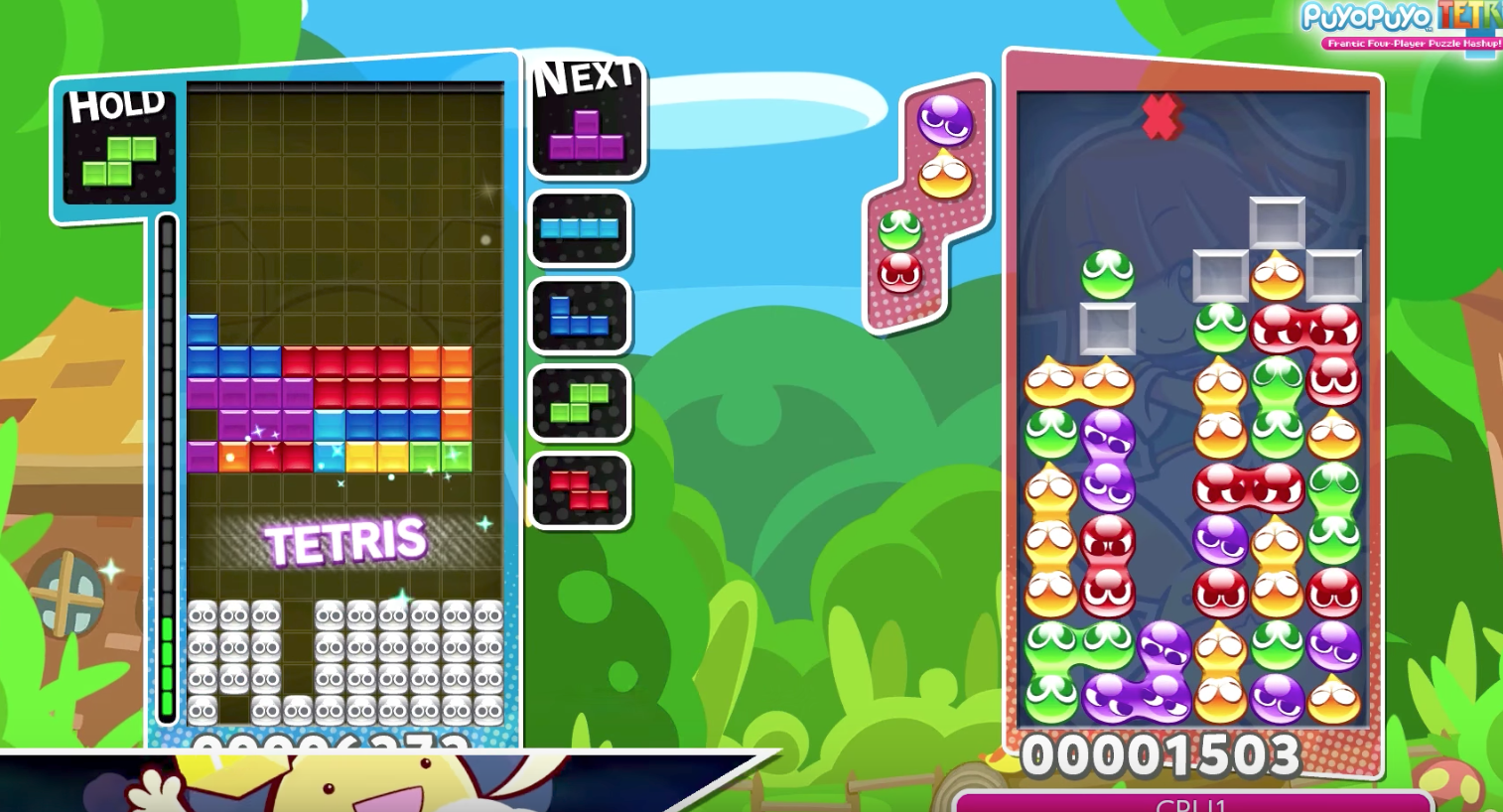
25) But you can play Tetris for free right now
Tetris still sells to this very day, but you don’t have to spend a dime to play it. Head over the game’s official website and play the game to your heart’s content. And don’t worry about ripping off Pajitnov; you’ll be playing with his blessing. What are you waiting for?
Editor’s note: This article is regularly updated for relevance.


